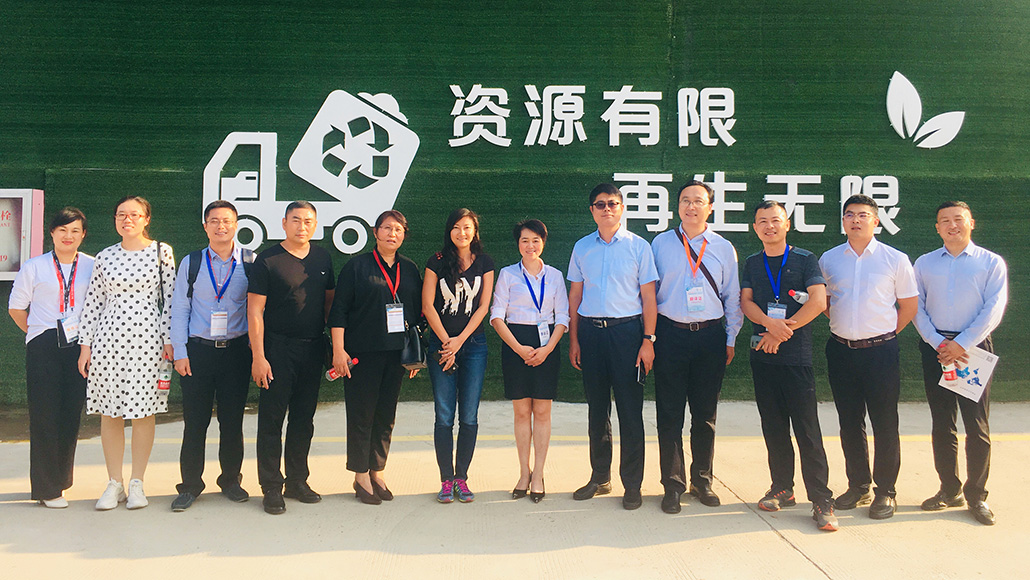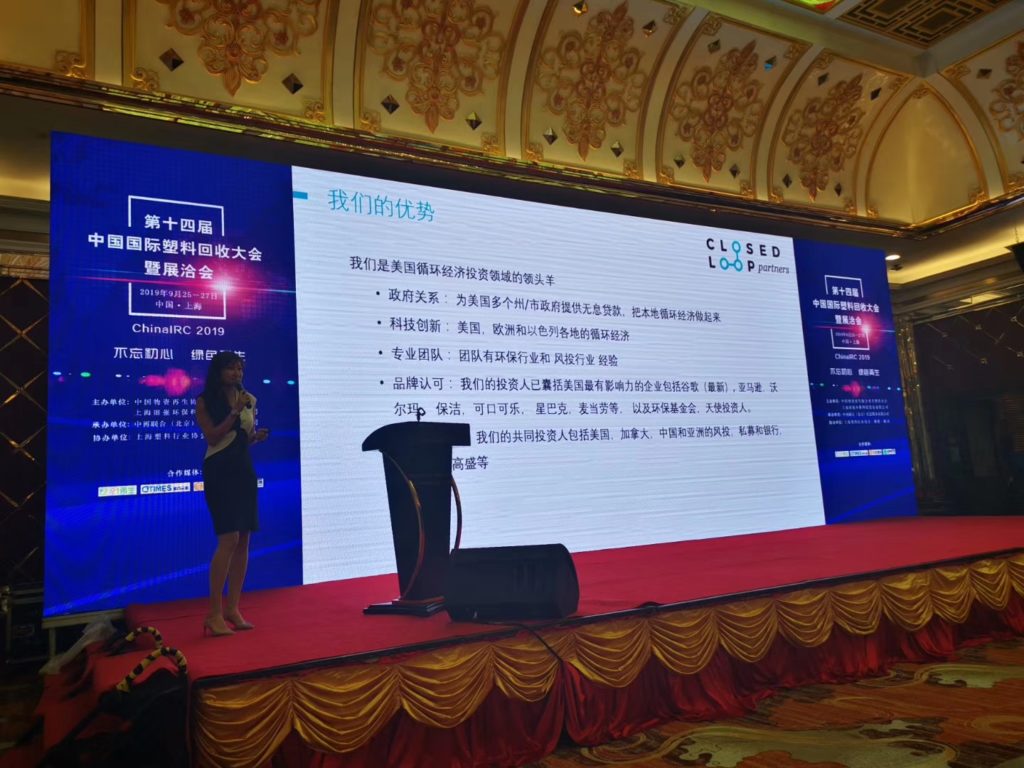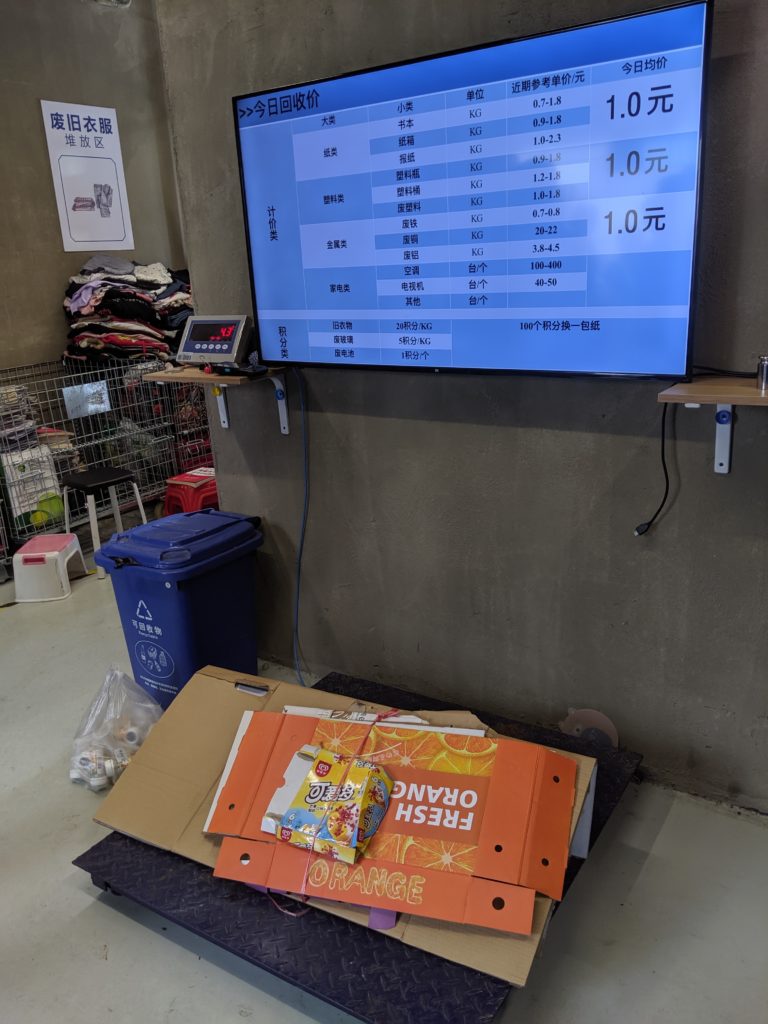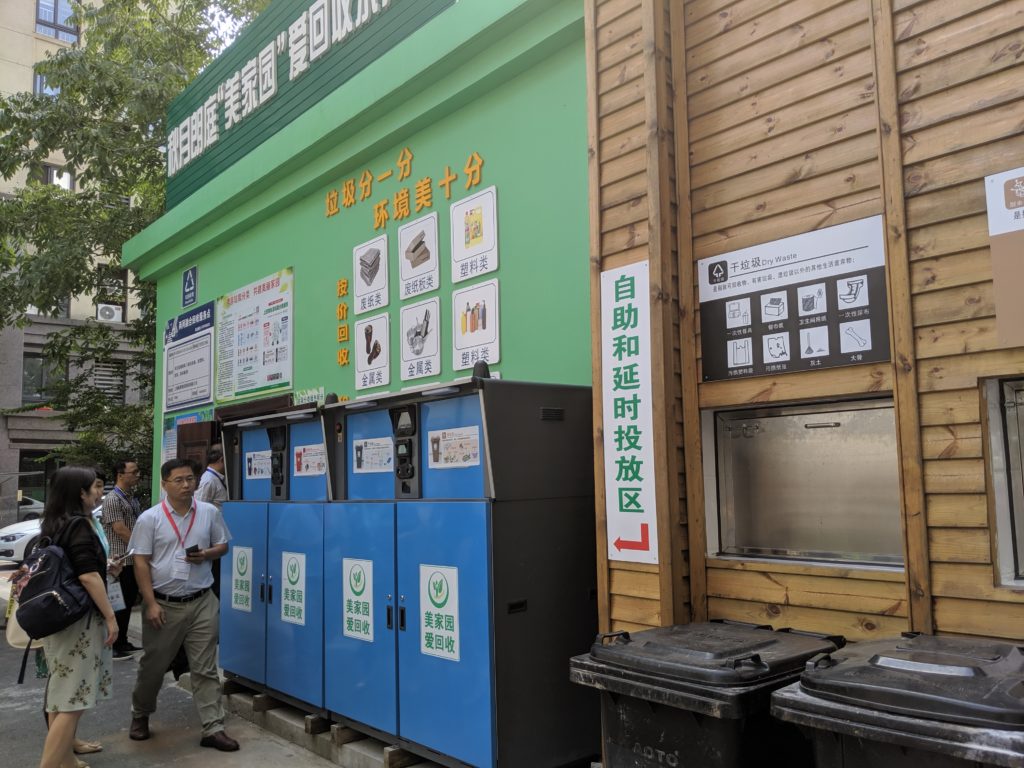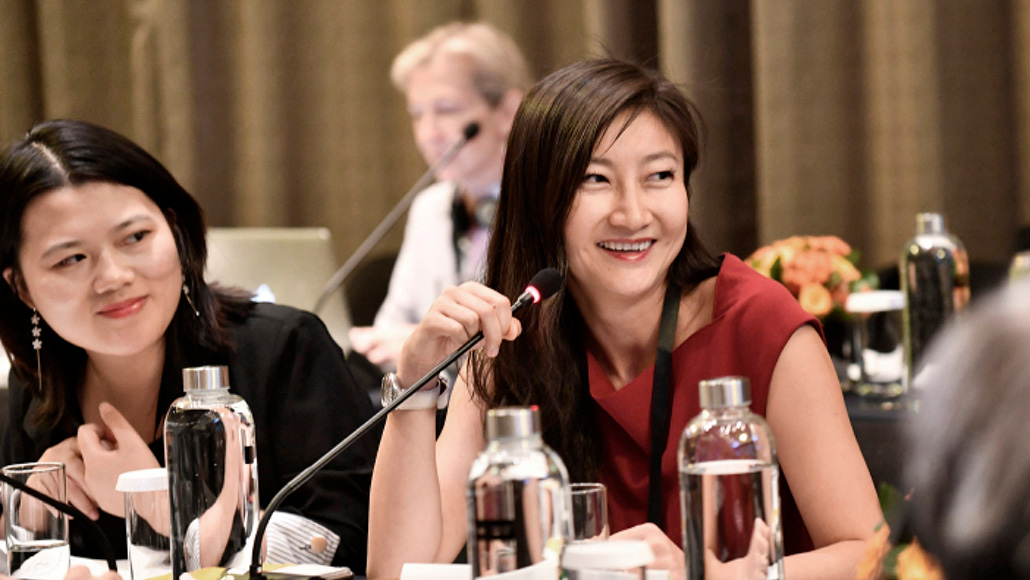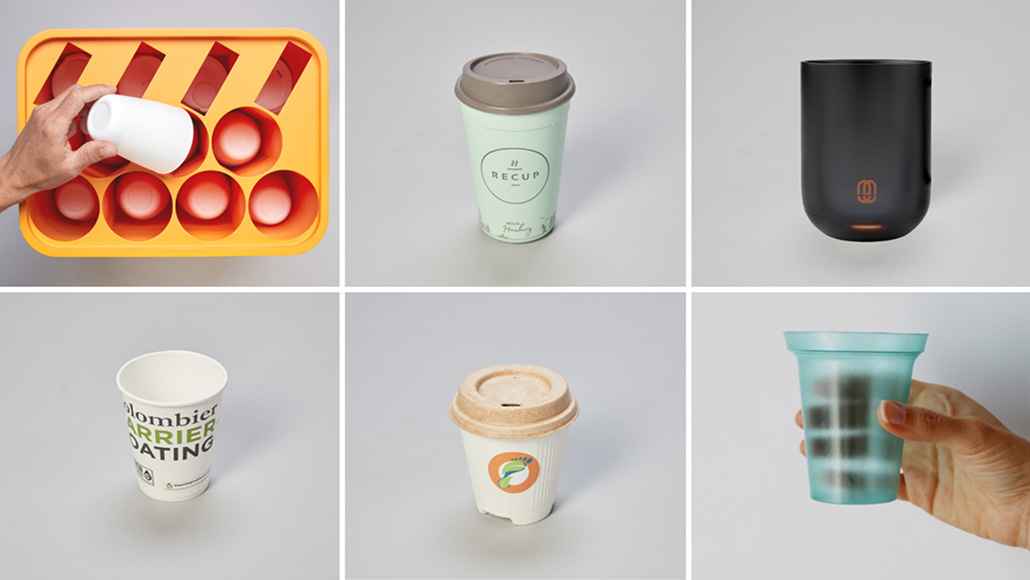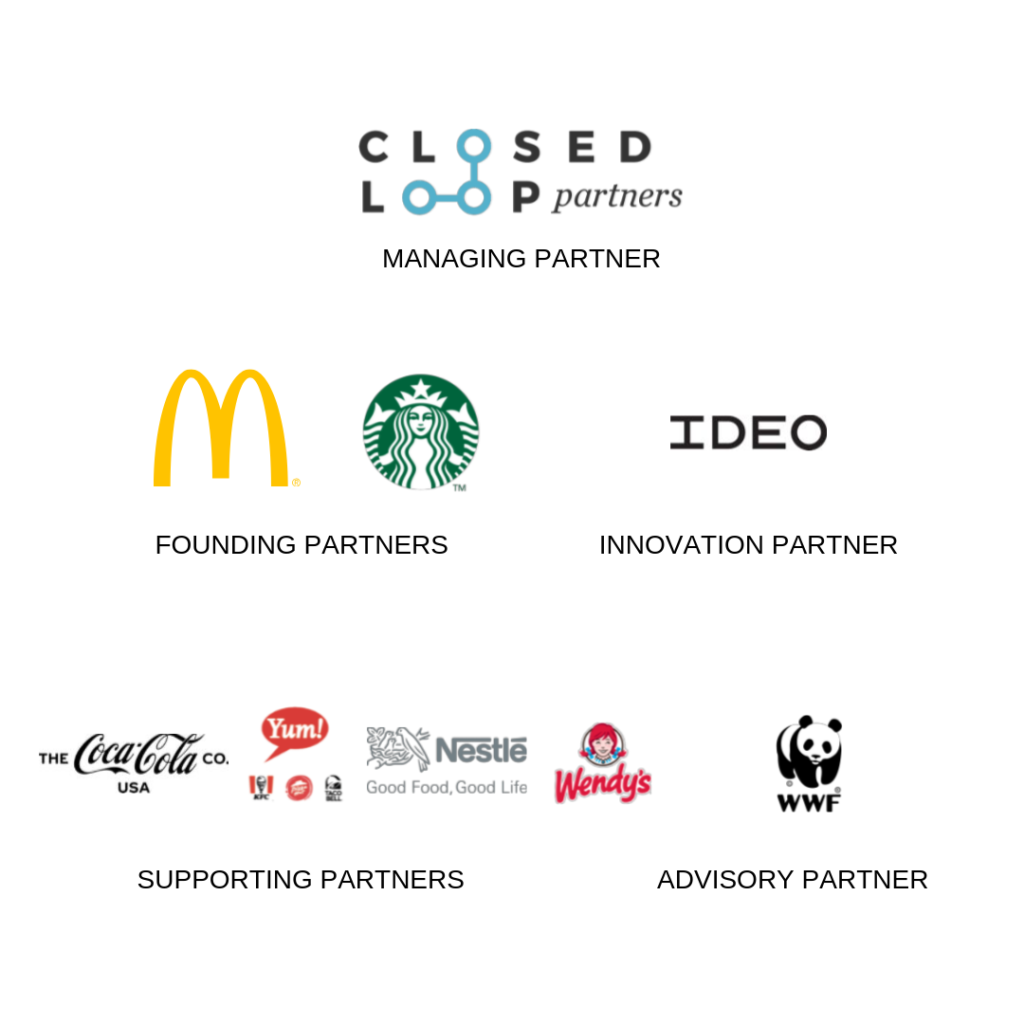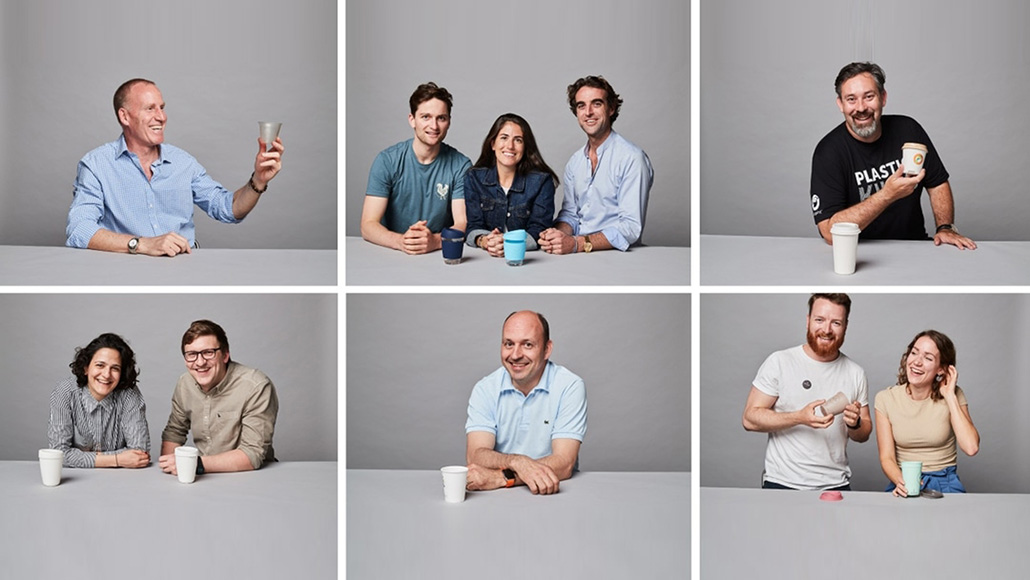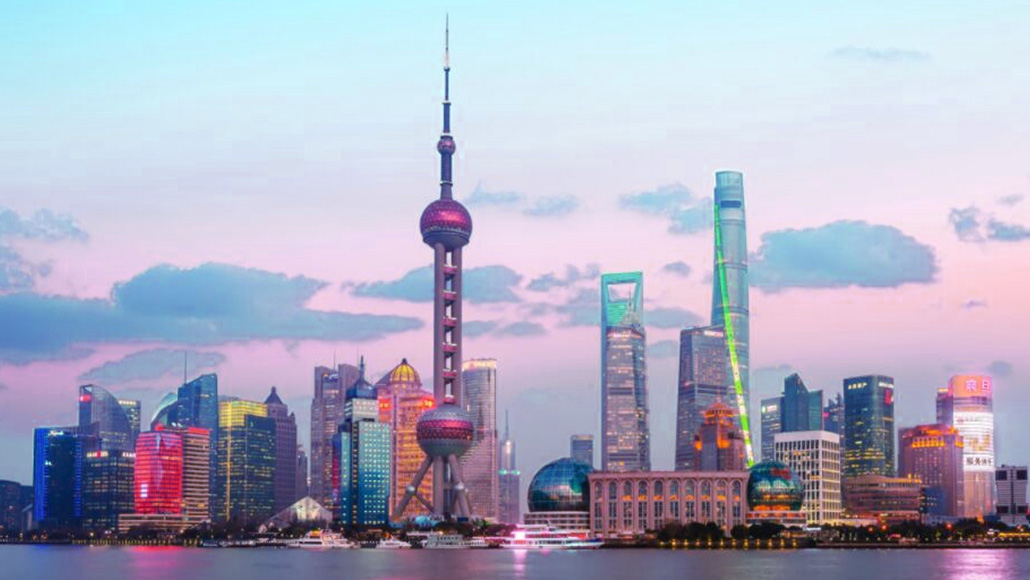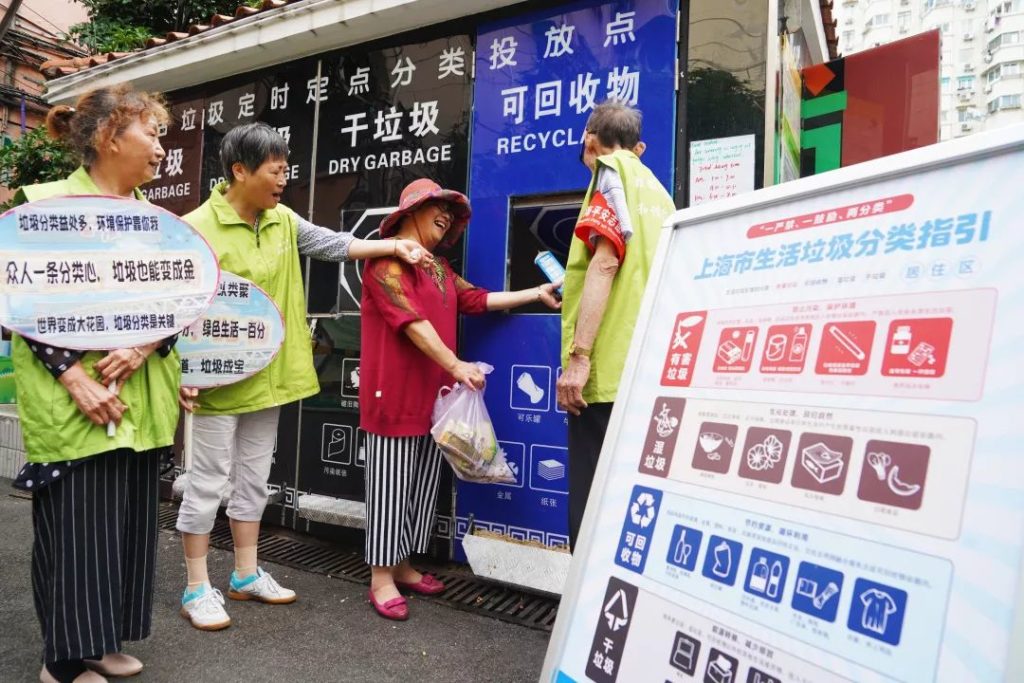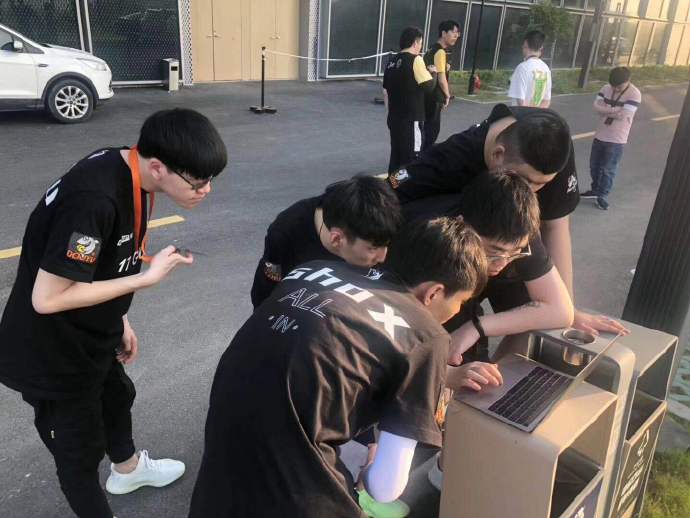Amid burbling espresso machines and towering stacks of cups, six teams in the NextGen Circular Business Accelerator are taking waste-free cup solutions to the next level. Venturing back of house at restaurants and into the world of waste management, see how teams use five design thinking practices to advance solutions for a more circular future.
The NextGen Consortium is a global initiative convened by Closed Loop Partners’ Center for the Circular Economy. Starbucks and McDonald’s are founding partners of the Consortium, together with supporting partners The Coca-Cola Company, Yum! Brands, Nestlé and Wendy’s, as well as WWF as an advisory partner. OpenIDEO is the Consortium’s innovation partner.
If you’re looking for a systemic challenge in need of some new thinking, look no further than your morning cup of coffee. Worldwide, 250 billion to-go cups are produced each year, and there’s an increasing need for recoverable alternatives. Most fiber cups have a plastic liner to prevent leaks. The fiber and plastic are recyclable once separated, but limitations and inconsistencies in recycling infrastructure around the world mean that in most markets these materials aren’t easily recovered. The trouble is, as OpenIDEO Circular Program Lead Chris Krohn explains,
“When we have a systems design challenge, we can’t expect to solve it using the same approach that created the problem. It’s essential to understand the issue from perspectives across the entire value chain, and then work across that system to develop a holistic solution.”
In pursuit of some fresh ideas, Closed Loop Partners launched the NextGen Consortium: a multi-year partnership of food and beverage industry leaders that aims to address global single-use food packaging waste. Up first, the ubiquitous hot and cold, fiber-based, to-go cup. The NextGen Cup Challenge identified twelve innovators with the most promising cup solutions – from new cup liners to reusable cup systems. Of those, six winning teams (pictured above) joined the NextGen Circular Business Accelerator, an initiative to help prepare the teams for testing and scaling their solutions to meet the needs of today’s biggest brands and consumers worldwide.
Before rolling out new cup solutions in a real-world setting, it was essential for Accelerator teams to understand the customer needs, business realities, infrastructure challenges, and people at the core of the cup ecosystem. In a week-long design Bootcamp that took us behind counters and across the San Francisco Bay Area, OpenIDEO, with support from Closed Loop Partners, led teams through five design thinking practices to quickly surface new insights and inspiration. Try them out yourself the next time you’re working on a complex problem.
1. Center on a plan for informed, effective research
Design a fresh perspective. An essential part of the design thinking process is design research: exploring what people say, think, do and feel to help build human-centered solutions. This often means getting out into the field to meet people where they are, which helps us understand real needs and imagine what’s next. As Nina Montgomery, an IDEO design researcher, shared with NextGen Accelerator teams at the start of the Bootcamp,
“The power of design research is that—through empathy and inspiration—it is able to surface new thinking.”
Start with what you know. Before jumping into the field, it’s helpful to curate some background knowledge. We worked with each Accelerator team to compile insights from desk research—across internal documents, datasets, and market, competitor and business plan analysis—to get a sense of what was known and what we needed to test. Some teams, like RECUP from Munich, Germany, plan to roll out systems involving reusable cups, while others, like Solublue from London, UK, are building biodegradable cup solutions from new materials. Despite this diversity in business models, every team needed to know how consumers and distributors would respond to their particular cups. We also took into consideration the needs of Consortium Partners like McDonald’s and Starbucks to help identify any gaps and inform the key questions each team had to answer to set themselves up for scale.
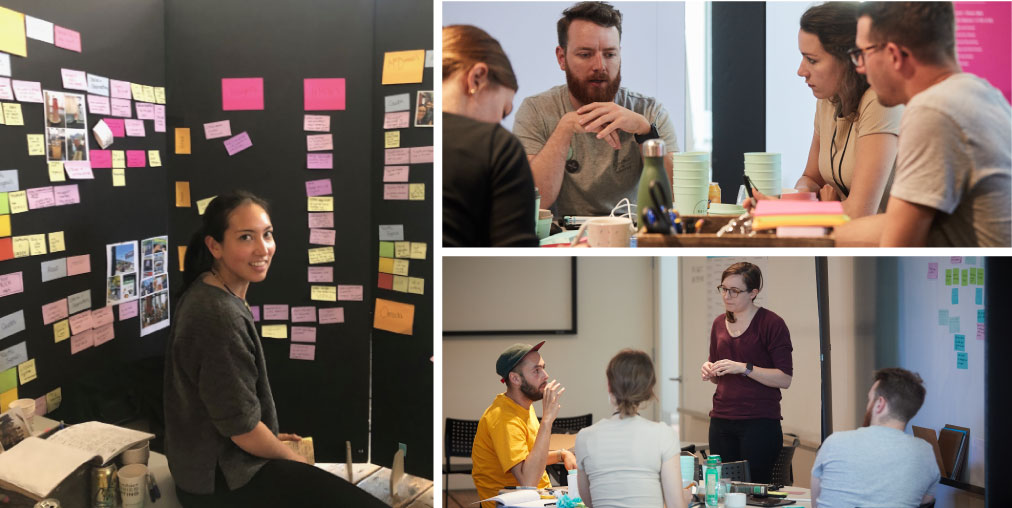
NextGen Circular Business Accelerator teams make a plan for their design field research.
Develop a research game plan. With this in mind, we kicked off the Bootcamp by developing a design research plan. This included deciding on research methods, team roles, and questions to ask in the field, and ensuring we were integrating research ethics. Building on background research, we helped Accelerator teams identify and schedule time to visit the kinds of people and places that would surface valuable, diverse insights about the to-go cup ecosystem. Together, we synthesized research questions in a discussion guide that was shared with each team member, ensuring that field research focused on what mattered most. Armed with a plan, a notebook, Sharpies, and lots of Post-Its, we were ready to hit the streets of San Francisco.
Try it:
- Explore a variety of design research methods in Design Kit.
- Focus in on your key research questions using this Design Research Discussion Guide.
2. Gain micro-level insights through observation
Watch and learn. That’s how, on a bright Tuesday morning, a group of IDEO designers and Accelerator entrepreneurs found ourselves attentively watching a stream of cups dance between hands and over counters at a San Francisco McDonald’s. Observation is a key method of design thinking. By taking a step back and looking carefully, we can better understand systems at a micro level.
At McDonald’s, observing employees interact with cups soon surfaced some fresh insights. To keep up with the lunch rush, cups must be easy to grab with one hand, nest well but also release easily from a stack, and communicate branding. Through observation, Accelerator teams quickly built empathy for the employees and identified how their new cups would or would not meet McDonald’s needs. By allowing us to observe their operations, McDonald’s was able to easily communicate their business realities and product requirements in a way that would have been impossible through words alone.
“Everyone knows McDonald’s, but how many people can say they’ve experienced the back of house logistics required to operate one? The Bootcamp provided opportunities like this that startups only dream about, and catapulted our growth potential in ways we’ll still be processing months later.”
Lizzie Horvitz, one of the Accelerator participants
Try it:
- Observation is simple. Grab a notebook, a pen, & scope out a good place to watch & listen.
- Find tips for getting started in this quick Design Research Field Guide from IDEO.
3. Uncover disconnects and trends with interviews and intercepts
Listen for gold. To fully understand what someone is thinking or feeling, we’ve found it’s often best just to ask. Building on our observations, we set up interviews with baristas, managers, and more, asking open-ended “how” and “why” questions that encouraged them to speak freely.
What we heard was a surprising amount of confusion around cup disposal best practices. In one coffee shop, baristas were told to compost cups, while the trash bins in the shop had signs instructing customers to recycle—both instructions contrasting with San Francisco waste management company Recology’s guidelines. User interviews helped teams identify pain points and systemic disconnects which would have been tough to spot without talking to the people on the ground.
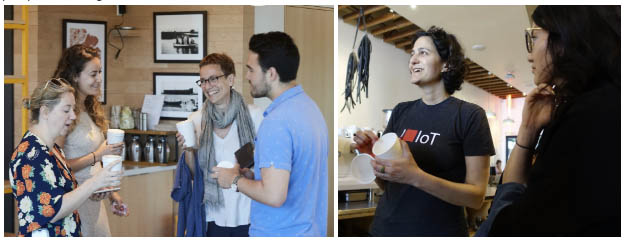
Teams gather user feedback on their cup designs and systems during intercepts and interviews.
Intercept for quick insights. The trouble with interviews: they can take time to set up. That’s why we also practiced intercepts— brief moments of connection with users that allowed us to capture impressions and test assumptions in real time. Conducting an intercept is as simple as walking up to a friendly face, introducing yourself, and asking a single important question.
The Footprint team—offering fully formed fiber-based cup solutions—tried out intercepts in a coffee shop, surveying customer opinions on their brown fiber cup vs. their more traditional white cup. The responses were intriguing. In general, millennials seemed to prefer the brown cup, describing it as “natural,” while older generations felt it looked “dirty.” By compiling responses, intercepts helped our teams quickly identify demographic trends and interests that would help define their future product offerings.
“Field research during the bootcamp showed us that there is potential to improve our cups and lids both for convenience and recyclability. We also got better insights into how logistics and incentives around the cup system might need to be adapted for the US market.”
Alexandra Gurstmeier of ReCup
Bring it all together. After every field research session, it’s important to debrief to ensure insights aren’t lost. With each Accelerator team, we’d synthesize—transferring notes from observations and interview guides onto post-its, sticking them up on a board, and grouping where we saw trends. This process helped the teams identify the essential flags, opportunities, and business considerations that surfaced in their research.
Try it:
- Use this Interview Guide to shape consumer conversations and ask strong questions.
- Fill out an Intercept Worksheet to get set up for these quick moments of connection.
4. See a challenge with fresh eyes through analogous experiences
Learn from others. Paradoxically, sometimes the best way to think differently is to seek what’s similar. Analogous research takes a look at different industries to find inspiration in the ways others have tackled similar challenges. During the Accelerator, we paired teams with organizations that have successfully worked through an issue our teams were currently facing. For example, the Solublue team—offering a plant-based, biodegradable cup solution—is currently preparing to ramp up its production. The team toured the Dandelion Chocolate factory for an inside look at how they set up and scaled their manufacturing process.
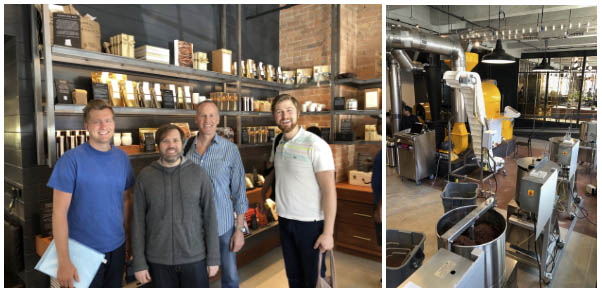
The Solublue team and IDEO design researchers explore the manufacturing systems of Dandelion Chocolate as analogous research.
Meanwhile, the CupClub team, which creates reusable cups people can pick up in a coffee shop and deposit at dedicated drop points around their city, found inspiration from an unusual source: rentable electric scooters. While cups and scooters may not seem to share much in common, CupClub learned from the Spin team how they managed the “economies” that popped up around their scooters, which provided quick cash for people willing to collect and recharge the scooters at home. This insight led to an interesting question for the CupClub team: how might we build economies of support around a reusable cup model that promote sustainability and job creation?
As the teams found, analogous research is a great way to gain a new perspective, learn from other’s struggles and successes, and help break through entrenched thinking.
Try it:
- Brainstorm: what other industries are tackling problems similar to the ones you are facing? What can you learn from their approach? Use this analogous inspiration exercise as a guide.
5. Map the existing infrastructure to define the path forward
Get real. To design sustainably, it’s essential to understand and integrate into the existing ecosystem that will touch a product over its lifecycle. Mapping how each team’s solution fit within the broader cup recovery infrastructure was crucial to ensure their cups would be fully recoverable down the line.
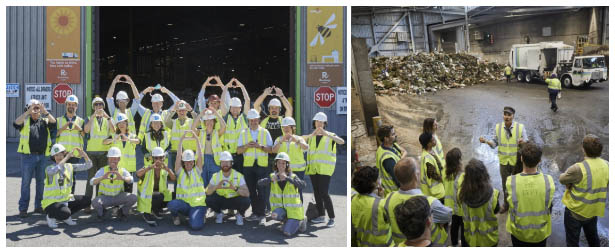
NextGen Circular Business Accelerator teams tour San Francisco’s waste recovery center, Recology.
Seek an informed perspective. Learning from experts, Accelerator teams toured waste management expert Recology’s facilities to better understand the technological capabilities and market forces affecting the local Bay Area recovery infrastructure. During the visit, teams had the opportunity to run their products through Recology’s recycling lines to gather real-time performance data. Teams also heard from Kate Daly, Managing Director at Closed Loop Partners, who shared a macro-perspective on global trends in recovery and reuse, and helped the teams think big picture—connecting upstream innovation to downstream recovery.
“Alignment between the design of cups and infrastructure is critical for capturing materials at every phase of a cup’s life cycle. It’s also important that as we continue to design for a better, more sustainable future, our infrastructure evolves too.”
Map the journey ahead. With these insights in mind, it was time to pull it all together. To get started, we helped teams consider their product journey, including all the people engaged along the way. The teams created a Post-It to represent every actor—from raw material producers and manufacturing technicians to corporate and distribution partners, consumers, and waste management experts—and made note of their specific needs as identified through research. Between actors, we drew lines to represent relationships: those that already existed, and those that each team needed to build in order to scale their solutions.
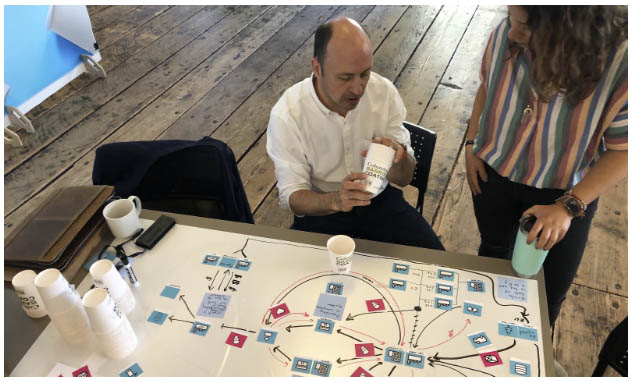
Ecosystem mapping with Henrik Björnberg, Chair of Colombier Group. Winning Cup Category: Innovative Cup Liner
The takeaways from the ecosystem mapping process set the Accelerator teams up with an actionable roll-out plan that identified their place within the existing infrastructure and who they needed to build partnerships with in pursuit of a fully circular, sustainable cup system.
Try it:
All together, these five design thinking practices helped our NextGen Accelerator teams gain a deeper understanding of the complex micro systems and macro infrastructure their products need to serve, while enabling Consortium Partners to quickly surface business realities and sticking points, helping to de-risk and accelerate the roll-out of new cups worldwide.
While not everyone can embark on a research sprint through futuristic waste recovery facilities and McDonald’s back-of-house experiences, anyone can apply design thinking practices to uncover fresh insights.
When addressing a problem that requires systemic change—prep, observe, interview, seek analogous inspiration, and map it out. The result could be some powerful new thinking, or perhaps even the holistic, circular cup of the future.

